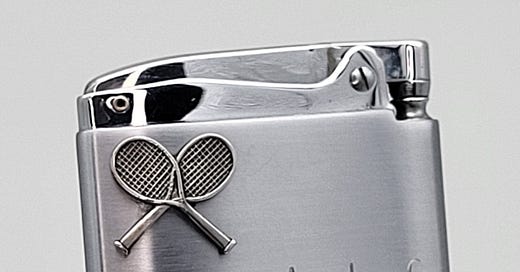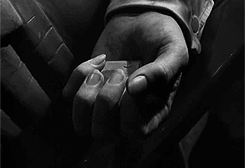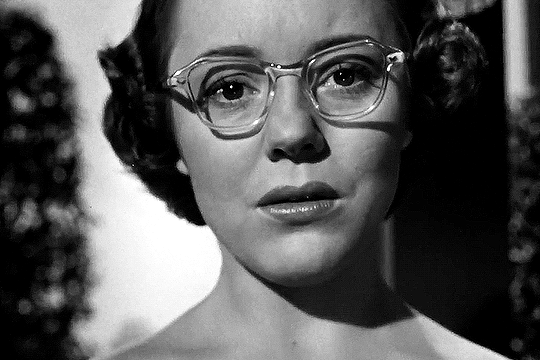The Lighter:
The Adonis model lighter was manufactured by Ronson in Newark, NJ. It first made its debut after World War II in 1947, and over the years was produced in at least 45 different variations. The actual prop lighter used in the film Strangers on a Train (1951) is a cherished artifact whose precise whereabouts today remain a mystery. This reproduction is the exact chromium plated model, with the reverse side featuring the engine turned diagonal lining. The front “criss cross” tennis rackets is a modified vintage sterling silver pin that is the exact match in size and style used in the film. The lighter also has telltale engraved A (Anne) to G (Guy).
The Dramatic Device:
Alfred Hitchcock (August 13 1899, London England – April 29, 1980 Bel Air, California, U.S.) was the renowned director and producer who popularized the term MacGuffin in his films.
What exactly is a MacGuffin? In fiction, a MacGuffin (sometimes spelled as McGuffin) is an object, device, or event that serves as a plot catalyst that is essential for driving the story forward and motivating the characters. However, its intrinsic importance is minimal; it’s often insignificant or irrelevant by itself.
Hitchcock himself explained the concept in a witty manner during a lecture at Columbia University: “Imagine two men on a train. One points to a package in the baggage rack and asks, ‘What’s that?’ The other replies, ‘Oh, that’s a MacGuffin.’ Curious, the first man inquires, ‘What’s a MacGuffin?’ The response: ‘It’s an apparatus for trapping lions in the Scottish Highlands.’ The first man protests, ‘But there are no lions in the Scottish Highlands!’ To which the other concludes, ‘Well then, that’s no MacGuffin!’” In essence, a MacGuffin is nothing at all.
A MacGuffin’s true significance lies not in what it is, but in how it drives the plot forward. In Hitchcock’s films, the MacGuffin is the thing that characters obsess over, but the audience doesn’t necessarily care about. It’s the mysterious object that sets the entire chain of events in motion. A MacGuffin can be anything from George Lucas’s Kiber Crystal, an unexplained glowing briefcase in Pulp Fiction, or even a lighter that shows up in the very first minutes of Strangers on a Train and ends up having more screen time than any third billing in the film.
Personal Thoughts:
I have been a Hitchcock fan for as long as I can remember. I even used my elective credits in college to take a film class on Hitchcock. Imagine my joy when I discovered that there was a Hitchcock film that heavily featured a lighter! I have always been thrilled by a lighter showing up in a movie. There is section of the Zippo Museum (Bradford, PA) dedicated to showing all the movie scenes that featured a Zippo. The historian at the Zippo Museum explained to me that there is a lot that goes into a Zippo showing up in a movie, and that even the sound associated with the Zippo is unique and copyrighted. To be honest, I’m more excited when any other lighter shows up in a movie. If I see a model in a movie I don’t own, it sets me on the hunt. The movie Inglourious Basterds had me setting up a few new searches on eBay when that movie came out; but the holy grail of a lighter in a movie is Strangers on a Train. It is not just a tool for smoking or lights up an air duct our hero is hiding in, it is the symbolic linchpin of the entire film. What is introduced as a simple romantic gift, and then quickly forgotten holds the characters fate for the entire film. There is even a scene in the film where you desperately watch the antagonist try to retrieve it, and you realize you are rooting against the protagonist just because you want that lighter back in his hand. For me, there has never been a better MacGuffin as a narrative device, it represents love, danger, and the petroleum drenched wick of fate that burns all the way through one of Hitchcock’s most thrilling plots.






